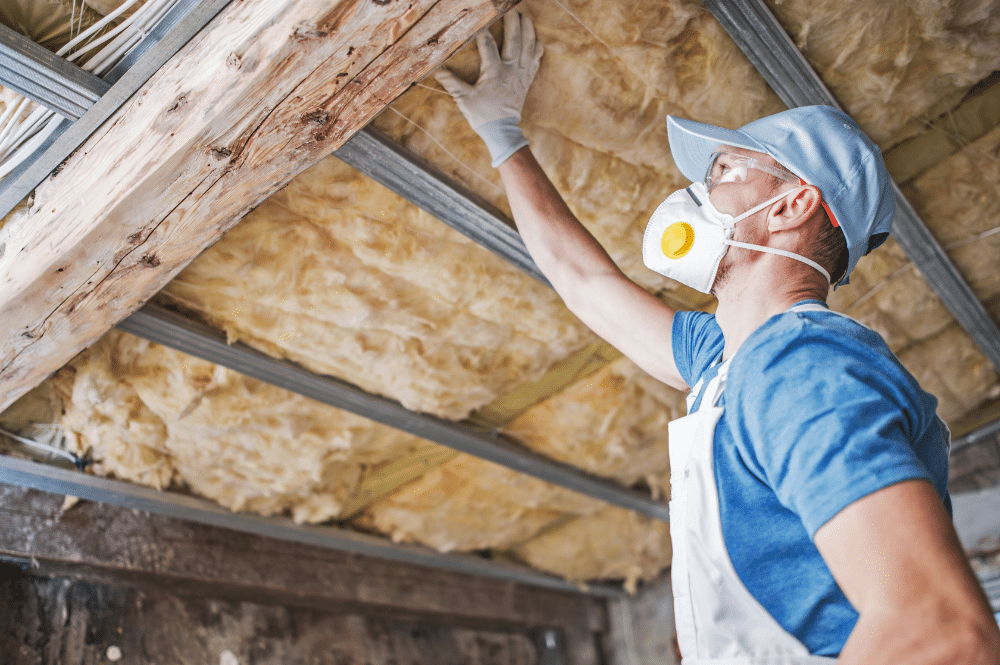As the colder months approach, homeowners everywhere are preparing to keep their houses warm while keeping heating costs down. But here’s the thing: it’s not just about turning up the thermostat. Proper insulation and sealing are critical to ensuring your home retains heat, stays comfortable, and maximizes heating efficiency. With rising energy costs, understanding winter insulation tips and sealing for winter can make a significant difference in both comfort and savings.
Winter Insulation Tips: Keeping the Warmth Inside
Insulation plays a vital role in keeping your home warm during winter. Think of your home as a cozy cocoon. If that cocoon has weak spots, the cold will creep in, and your heating system will work overtime to compensate, wasting both energy and money. Insulation acts as the barrier that helps trap heat inside where it belongs.
Choosing the Right Insulation Materials
The type of insulation material you choose matters. Fiberglass is a common and affordable option, but foam insulation offers superior performance, particularly in hard-to-reach areas. Cellulose, made from recycled materials, is also a popular choice for eco-conscious homeowners. Each material has its strengths, but the ultimate goal is to ensure every part of your home is insulated correctly to maximize heating efficiency.
Key Areas to Insulate
Focus on the key areas that are prone to heat loss. The attic is perhaps the most critical, as heat rises and can escape through the roof if not properly insulated. Adding insulation to your walls helps reduce drafts while insulating floors and crawlspaces ensures that cold air doesn’t seep up from below. These simple winter insulation tips can dramatically reduce the load on your heating system, keeping your home warmer without cranking up the heat.
Upgrading Existing Insulation
It’s also worth assessing your current insulation. If your home is older or you’ve noticed rooms that are particularly cold, you may need to upgrade. Even if you’ve insulated before, materials degrade over time, and advancements in insulation technology could mean significant improvements in heating efficiency.
Sealing for Winter: Battling the Drafts
Now that your insulation is set, what about all those pesky air leaks? You can have the best insulation in the world, but if your home isn’t properly sealed, cold air will find its way in, and warm air will escape. Sealing for winter is all about identifying and closing up these gaps, ensuring your home is airtight, and your heating system isn’t working harder than it needs to.
Common Air Leaks to Target
Start by identifying common air leaks. Windows, doors, and vents are the usual suspects but don’t forget about less obvious places like the attic hatch, basement, and even outlets. You’d be surprised how much heat can slip through these small cracks and openings.
Effective Sealing Techniques
Once you’ve located the problem areas, it’s time to act. Weatherstripping around windows and doors is an easy and affordable way to stop drafts in their tracks. Caulking any cracks or openings also helps seal the deal. And if you’re looking for added warmth and insulation, consider insulated window treatments, such as thermal curtains, to help reduce heat loss through glass surfaces.
Attic and Basement Sealing
Don’t neglect your attic and basement. Heat has a funny way of escaping upwards, so be sure to seal gaps in your attic. The basement, often a cold and drafty area, can also benefit from a thorough sealing to ensure that cold air stays where it belongs—outside.
Maximizing Heating Efficiency: Beyond the Basics
Now that you’ve addressed insulation and sealing, it’s time to think about how to get the most out of your heating system. Maximizing heating efficiency doesn’t have to be complicated, but it does require some attention to detail.
Regular HVAC Maintenance
First, ensure that your HVAC system is optimized for winter. Regular maintenance is essential to ensure your system is running smoothly and efficiently. Dirty filters, clogged vents, or aging components can force your system to work harder, costing you more in energy bills and potentially shortening the life of your equipment.
Programmable Thermostats and Zoning Systems
Installing a programmable thermostat is another smart move for enhancing heating efficiency. These devices allow you to set your heating system to run at lower temperatures when you’re asleep or away and then kick in when you’re home. This simple adjustment can result in significant savings without sacrificing comfort.
Consider zoning systems as well, especially if you live in a larger home. Zoning allows you to direct heat to specific areas of the house, meaning you won’t waste energy heating rooms that aren’t in use. Rather than heating your whole house, heat only the rooms where your family spends most of their time.
Professional Energy Audits
Finally, for homeowners looking to take things to the next level, consider scheduling a professional energy audit. An audit can uncover hidden areas of inefficiency in your home’s insulation, sealing, and overall energy use, offering tailored solutions to further reduce energy waste and maximize heating efficiency.
The Smart Way to Stay Warm This Winter
Proper insulation and sealing are about more than just staying warm—they’re about creating a home that’s energy-efficient, cost-effective, and comfortable all winter long. By following these winter insulation tips and focusing on sealing for winter, you’ll not only save money on your energy bills but also enjoy a cozier, more efficient home.
At Product Air Heating & Cooling LLC, we specialize in helping homeowners prepare for the cold months ahead. Whether it’s upgrading your insulation, sealing air leaks, or optimizing your HVAC system for heating efficiency, we’re here to ensure your home stays warm and your energy costs stay low.
Ready to take the next step? Contact us today to schedule a consultation and find out how we can help make your home winter-ready.

